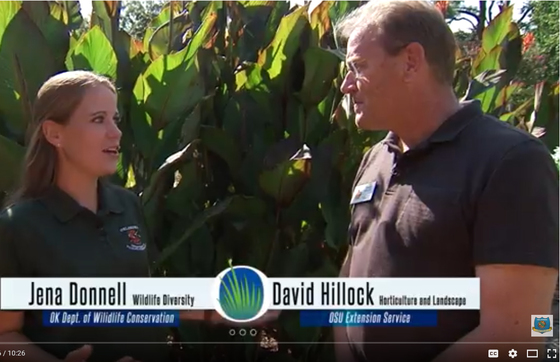
Go Behind the Photographer's Lens
Each year, sandpipers fly more than 2,000 miles from their high-Arctic breeding grounds to their South American wintering grounds. Along the way, they must take short breaks to rest and refuel on small aquatic crustaceans. Hackberry Flat Wildlife Management Area in southwestern Oklahoma is a stopover for many of those sandpipers. Area biologist Kelvin Schoonover recently pointed out a mass of the small shorebirds frantically probing the exposed mud to fellow biologist and photographer Jeremiah Zurenda, who saw an opportunity to combine his love for the outdoors and his passion for photography.
Find out what it took to get eye to eye with these
long-distance migrants
Species Spotlight: Plains Leopard Frog
Fall rains can create a second peak in the breeding season
of many Oklahoma frogs, including the plains leopard frog. Common in the
western one-third of the state, these spotted frogs frequent ponds and marshy
areas.
Learn more in the Wildlife Department's online field guide
 What to Plant for Pollinators
Oklahoma’s plant and pollinator diversity is immense. OSU Extension Service’s Dave Hillock helps homeowners identify plants that can be added to a backyard wildscape to benefit pollinators in a recent episode of Outdoor Oklahoma.
Watch the clip to learn about pollinator-friendly plants
Put Your Stamp on Conservation
Wetland conservation across the United States has been
signed, sealed, and delivered with a stamp. The Federal Migratory Bird Hunting
and Conservation Stamp – better known as the Duck Stamp – features original, hand-drawn
creations of ducks and other waterfowl, and has been a groundgbreaking way for
sportsmen to contribute to habitat conservation. Ninety-eight cents of every
dollar is used to purchase wetland habitat in the U.S. – protecting more than
5.7 million acres to date.
The Federal Duck Stamp is one piece of a four-part licensing
system for Oklahoma waterfowl hunters 16 years and older. But non-hunters, like
bird watchers and other nature enthusiasts can purchase the federal and state stamps to support
habitat conservation for other wetland-dependent migratory birds. Species like
black-necked stilts, white-faced ibis, king rail, and a host of amphibians and
reptiles all benefit from wetland conservation.
Turn beautiful artwork into wetlands
Calendar of Events
Monarch Butterfly Watch
Sept. 30, Oct. 1-2 and 5-6
Hackberry Flat Center
Great Plains Fire Summit
Oct. 1-3
Ardmore
BioBlitz! Oklahoma
Oct. 5-7 (Registration ends at 8 a.m. Oct. 3)
Greenleaf State Park
Blue Goose Days
October 20, 9:30 am to 2 p.m.
Okmulgee
Bat Week 2018
October 24-31
|